- Home
- Paulo Coelho
Inspirations
Inspirations Read online
PENGUIN CLASSICS
an imprint of
PENGUIN BOOKS
PENGUIN CLASSICS
Published by the Penguin Group
Penguin Books Ltd, 80 Strand, London WC2R 0RL, England
Penguin Group (USA) Inc., 375 Hudson Street, New York, New York 10014, USA
Penguin Group (Canada), 90 Eglinton Avenue East, Suite 700, Toronto, Ontario, Canada M4P 2Y3
(a division of Pearson Penguin Canada Inc.)
Penguin Ireland, 25 St Stephen’s Green, Dublin 2, Ireland (a division of Penguin Books Ltd)
Penguin Group (Australia), 250 Camberwell Road, Camberwell, Victoria 3124, Australia
(a division of Pearson Australia Group Pty Ltd)
Penguin Books India Pvt Ltd, 11 Community Centre, Panchsheel Park, New Delhi – 110 017, India
Penguin Group (NZ), 67 Apollo Drive, Rosedale, North Shore 0632, New Zealand
(a division of Pearson New Zealand Ltd)
Penguin Books (South Africa) (Pty) Ltd, 24 Sturdee Avenue, Rosebank,
Johannesburg 2196, South Africa
Penguin Books Ltd, Registered Offices: 80 Strand, London WC2R 0RL, England
www.penguin.com
This selection first published 2010
Selection and introduction copyright © Paulo Coelho, 2010
The moral right of the editor has been asserted
The Acknowledgements on pp. 237–40 constitute an extension of this page.
All rights reserved
Without limiting the rights under copyright reserved above, no part of this publication may be reproduced, stored in or introduced into a retrieval system, or transmitted, in any form or by any means (electronic, mechanical, photocopying, recording or otherwise), without the prior written permission of both the copyright owner and the above publisher of this book
ISBN: 978-0-14-195734-0
Consider the lilies of the field, how they grow; they toil not, neither do they spin: And yet I say unto you, That even Solomon in all his glory was not arrayed like one of these.
(Matt. 6:28–9)
Contents
Preface
WATER
Subtle Realm – Unconsciousness – Mind – Dreams – Strategy – Logic – Possibilities – Passivity – Mobility
Introduction
Hans Christian Andersen: The Ugly Duckling
‘The Prologue’ from Tales from the Thousand and One Nights
Niccolò Machiavelli: from The Prince
Lewis Carroll: from Through the Looking-Glass – ‘Looking-glass House ’
Sun-tzu: from The Art of War – ‘Forms and Dispositions’
EARTH
Winter – Body – Decay – Womb – Mother – Receptive – Passive – Stagnation (Prison) – Roots
Introduction
Oscar Wilde: from De Profundis
Bram Stoker: from Dracula – ‘Dr Seward’s Diary’
Hannah Arendt: from Eichmann and the Holocaust
W.B. Yeats: from Selected Poems – ‘He wishes for the Cloths of Heaven’ and ‘The Song of Wandering Aengus’
D. H. Lawrence: from Lady Chatterley’s Lover
AIR
Breath – Life – Communication – Action – Instability – Agitation (not action)
Introduction
Nelson Mandela: from No Easy Walk to Freedom – ‘Black Man in a White Man’s Court’
Gabriel García Márquez: from One Hundred Years of Solitude
Robert Louis Stevenson: from The Strange Case of Dr Jekyll and Mr Hyde – ‘Henry Jekyll’s Full Statement of the Case ’
George Orwell: from Nineteen Eighty-Four
Jorge Luis Borges: from Fictions – ‘The Library of Babel’
FIRE
Spirit – Light – Heat – Darkness (Smoke) Hymn – Hell – Motion: Root of all change
Introduction
From the Rig Veda – ‘Hymns to Agni, God of the Sacrifice’
From The Desert Fathers – Sayings of the Early Christian Monks – ‘Visions’
From the Bhagavad Gita
From the Dead Sea Scrolls
Leopold Sacher-Masoch: from Venus in Furs
Kahlil Gibran: from The Prophet
Rumi: from Spiritual Verses
Rabindranath Tagore: from Selected Poems – ‘Brahmā, Viu, Śiva’
Mary Shelley: from Frankenstein
Acknowledgements
Preface
A few months back a friend of mine sent me a little book by the Argentinian writer Jorge Luis Borges entitled The Book. In fact, it is the transcription of a talk Borges gave towards the end of his life (1978). This great writer had already lost his vision by the time he ‘composed’ this text and that’s why the small book I received has the fluidity and closeness of a talk that he probably gave in the dark study of his flat in Buenos Aires – an interesting talk that I wish I could have had with him in an Argentinian café of the neighbourhood of Recoleta or towards the Plaza de Mayo in Buenos Aires. The reason I mention this event is because – like all miracles in life – this strange little book appeared in my life at the exact moment I had this anthology to compile and it talks precisely about the moment when the written word surpassed the oral message in our culture.
Borges starts his talk by saying how the Ancients did not revere the book – the written word – as we do. Rather, they saw in the written word a sort of imprisonment of the spirit, of oral teachings. Indeed, to write a message down transforms it: it becomes visible, palpable and no longer dwells in the space between the speaker and the listener. The message becomes ‘heavier’, acquires a body of ink and paper (or clay in ancient times) and is supposed to live longer than the person who first spoke it. Borges observes that most of the great teachers of ancient times wrote not a single word. The teachings of Buddha, Pythagoras, Socrates or Lao Tzu were all oral, their students being the ones to write them down. Jesus follows the same path – yet with this striking difference that he, once, wrote in words in the sand that were soon blown away by the wind.
To write was the artifice the apprentices had to resort to in order to record the message of these great men. Writing emerges then as an extension of memory.
Of course, the Torah as well as the Koran or the Indian Vedas are exceptions, given that they are holy books, believed to have been written by God himself. For the Hindus the Rig Veda is ‘non-human’, has always existed and only appears at a precise time of a cycle. The text then that we have inaugurates our manifested world. The Torah and the Koran both capture the very breath of God. In this case, there is an inversion of the perception of the book: from a mere transcription, the written word becomes spirit itself, the beating heart of a religion. Every page, every line, every word, every letter carries the mark of an endless memory, of a bottomless knowledge.
Yet, these sacred books – because they are written – represent the idea of an extension of memory. One has simply to remember the scene in which God inscribed the Ten Commandments in stone to understand that we humans need these divine ‘memoranda’.
It becomes clear that the written word enables us to remember, but at the same time it perpetuates this loss of memory – we no longer need to make the effort of remembering since it’s written down. Plato, in the Phaedrus, puts a story in Socrates’ mouth that is quite telling of this very contradiction.
But why am I mentioning all this? An anthology – I came to discover – comes from the Greek words meaning a flower-gathering – in other words, a bouquet of flowers. An anthology, then, would be a sort of reminder of something else, a small token of something much larger. Flowers bring with their fragrance and colour a reminder of the fields, of a season. An anthology, if I am to follow Borges’ logic, is a reminder of other books that, in their tur
n, are reminders of an oral, living message.
An anthology is not only a collection of texts or poems, but a gift, something we arrange, according to our sensitivities, to give to others. The flowers themselves are not created by us – in this case, the books that I choose to present to you lie in front of me as a vast field of flowers, stretching infinitely into time’s horizon. To push this idea a little bit further: some of these texts, such as the Rig Veda or the Dead Sea Scrolls, are not attributable to a specific single writer, but to this common furnace of imagination that lights humanity.
At the beginning of my work, I decided to stroll in this beautiful field. I remember having to choose from the vast collection of Penguin Classics and feeling that what lay ahead of me was of titanic proportions. Imagine: from the Rig Veda to Lady Chatterley – how could I possibly make any sense of the great variety of books that throughout my life have fed my imagination? Let’s be honest – throughout a lifetime we amass a quantity of stories and information that only our forgetfulness puts into shape. It is like the work of a sculptor who, with his chisel and mallet, chips away at the excesses of the stone in order to reveal his creation.
Forgetfulness, then, moulded my memory and when I started to venture into these golden fields, little by little scenes, words, visions came back to me. Suddenly I felt I was no longer out in the open air, but revisiting a personal garden.
Yet, even though I found a renewed pleasure while turning the pages of these books, I still had to face the hardest part: to present all this richness to you. Where to start? How to make head or tail of such a diversity of texts? More difficult still: how would I choose the passages?
Borges in his talk mentions Emerson, who used to say that a library was like a magic cabinet. In books we find the best demonstrations of the human spirit, but in order for them to come to life, we need to open them and read them. In the case of this anthology I will be presenting glimpses of these great spirits, and my aim with this work is that readers will feel compelled to go to their magic cabinets and re-awaken their imagination.
But if the aim is clear and natural, how to get there, on the other hand, is not so easy. Firstly, there are countless ways of arranging texts together. Some of these methods appear more dispassionate than others, such as the possibility of grouping texts chronologically, alphabetically, by geographical areas, etc. … At first, this seemed the safest bet since the reader would quickly be able to find out who the writers were and when they wrote. Yet presenting this knowledge – this outward information – didn’t convince me.
I felt this would be like making a bouquet with no true originality – putting different flowers together simply because they start with the same letter or are the same height. Imagine offering a bouquet with flowers whose names started with the letter R – we would end up with quite a messy gift, handing over a muddled mass of Ranunculus, Raspberries, Reeds, Rhubarb, Roses, Rosemary, Rue and Rye-grass. Where is the invention in that? It certainly would be a fun thing to do (I’m sure Jacques Prévert, the French poet, with his endless lists would be carried away by this) but I’m not sure if each flower would quite stand out and the fragrance of each species be clearly distinct.
While thinking about this I remembered Ikebana – the Japanese art of flower arrangement. In Japan, bouquets are not thought of in the same way as in the west – the Japanese concentrate more on the lines and spaces between the flowers rather than on the colours and fulness of these arrangements. That’s why, when carefully selecting the material, they never combine too many species of flowers. They also give particular importance to the leaves – as if these were the necessary spaces to reveal the essence of colours and the purity of the composition.
Ikebana is not simply about aesthetics – it is also part of the Zen tradition and is therefore a form of meditation, as is Kyudo (archery) or calligraphy. When Chinese Buddhist monks were introducing Ikebana into Japan in the sixth century, they would create arrangements to be offered in the temples, and these offerings were put together in such a way that the eyes of the viewers would be lifted up by the composition. These bouquets were in a way a sort of natural cathedral that aimed at stirring the soul of the viewers and paying homage to Buddha.
While reading about Ikebana, I also discovered that these sacred bouquets were arranged according to three main lines that symbolized heaven, earth and humankind. This relation between the elements brought me back to a familiar idea: the ancient notion of the four elements.
The Ancients believed that all things – visible and invisible – were composed of four different substances, uncreated and imperishable: Earth, Water, Air and Fire. It’s important to stress that these elements were not simply considered in their material form – they were in fact understood symbolically. The attributes of each element then corresponded to a specific spiritual, mental or physical dimension.
Thus, the elemental air is not only the air, but a temper, a way to behave, bringing back specific colours and smells, portraying a particular universe. Elemental water goes far beyond the sea or the oceans, lakes and pools to reach a dominion of beautiful dreams, possibilities and ideas. The Greek philosopher Empedocles, who lived sometime in the fifth century BC, is the one who proposed a precise theory of the four elements, and, after him, Aristotle made it a pillar of his philosophical system. The theory of the elements was a great success in Antiquity as well as during the Middle Ages, both in the east and in the west.
But in fact this theory goes far back into an immemorial past and presents itself as a basis for meditation and science. It seems strange to us because when we see fire, for instance, we just see fire and nothing else. The Ancients saw many other things because each material object was a symbolic key leading to a more complete reality, a reality that, though invisible, ruled everyday life.
The four elements symbolize both our world in all its dimensions and the way we dwell in this world, the way we see it.
Many stories can be summed up in a few tales. Storytelling can be understood as a wonderful and powerful crystal that grows deep in the narrator’s mind and heart to flourish in words and images.
Let me briefly introduce to you the four main parts of this book as if I were describing beautiful flowers. But may those special flowers, instead of withering and perishing, grow and blossom, again and again, in your lives…
Let’s imagine a circle made out of those four elements. They make a wheel, a vivid wheel spinning over the world and in its innermost part: our hearts. If a traveller could travel to the end of the world, he might discover this wheel turning in front of him and within him. And he would be complete, as one. Indeed, those four elements form an idea of the whole, of the universe. To feel complete, as a being, can be a very difficult task. And an anthology like this one can never be complete until, reader, it is read by you. And your insight completes the circle and makes it turn again.
Like this traveller, let us go to the end of the world, to gaze at those elements scattered in the heavens. And what will be the first journey?
Introduction
Water. Deep water. Infinitely deep water of the primordial ocean, where everything is possible. It is the origin of the world, an ocean far bigger and wider than what we see on earth. Something huge and fantastic, bottomless. It is the return to a kind of dissolution, with all its dangers, and the chance for a new birth. We can find horrid monsters and fascinating creatures in the depths of the water. The liquid cannot support us, but we know that life itself first appeared in water. The unconscious life dwells here, the deepest desires form like fishes in the darkest part of the ocean and then rise towards the light, where they can transform themselves into new dreams and ideas. Water was linked to the ‘lymphatic’ temper in ancient medicine, to signify a sort of calm but rather passive temperament. Of course, our body and the world are bound together by myriads of subtle links and correspondences. The following texts illustrate this in their own ways.
With The Ugly Duckling, by Hans Christian Andersen
, we confront the awkwardness of a different life among more ‘normal’ lives, and the struggle to affirm something worthwhile. Then, with the beginning of The Thousand and One Nights, we hear the whimsical story of Shahrazad and her tormented destiny: because she was supposed to die, she invented a strategy to survive. Water is likewise imagination and invention, the very deep root of our mind that can reveal to us many treasures. Those treasures, unfortunately, can be ambiguous. Machiavelli’s The Prince illustrates how fear itself can be a valuable tool in some situations. Fear, like those unknown monsters from the deep, can show us how strength is often linked to the stranger parts of the human being. Lewis Carroll’s Through the Looking-Glass tells us that reality can be slightly different from how we usually think about it. And the expression, ‘to walk through the looking-glass’, is now commonly used to explain how the way we perceive reality can be altered, sometimes in its own way, and without us. The Art of War, by Sun-tzu, provides us with enigmatic and puzzling advice. The ground, or the earth, is called forth, but water lies like a sort of reminder – a reminder of the origins of mind and the very basis of will.
HANS CHRISTIAN ANDERSEN
The Ugly Duckling
It was so lovely out in the country. It was summer. The rye was yellow, the oats green, the hay had been gathered in stacks down in the green meadows. That’s where the stork was walking around on his long red legs, speaking Egyptian, because that was the language he had learned from his mother. Surrounding the fields and meadows were great forests, and in the middle of the forests were deep lakes. Oh yes, it was truly lovely out in the country! In the midst of the sunshine stood an old estate with a deep moat all around. From the walls and down to the water grew huge dock leaves that were so tall that little children could stand upright under the largest of them. It was just as wild in there as in the thickest forest, and this was where a duck was sitting on her nest. She had to sit there to hatch her little ducklings, but now she was getting tired of it all because it was taking such a long time, and she rarely had visitors. The other ducks were more fond of swimming around in the moat than running over to sit under a dock leaf to chat with her.

 The Alchemist
The Alchemist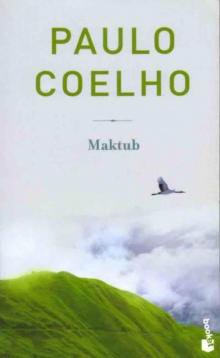 Maktub
Maktub Like the Flowing River
Like the Flowing River The Winner Stands Alone
The Winner Stands Alone The Spy
The Spy By the River Piedra I Sat Down and Wept: A Novel of Forgiveness
By the River Piedra I Sat Down and Wept: A Novel of Forgiveness Eleven Minutes
Eleven Minutes Manuscript Found in Accra
Manuscript Found in Accra Warrior of the Light
Warrior of the Light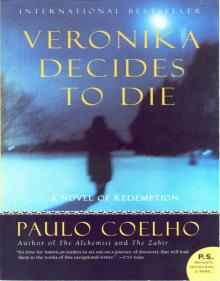 Veronika Decides to Die: A Novel of Redemption
Veronika Decides to Die: A Novel of Redemption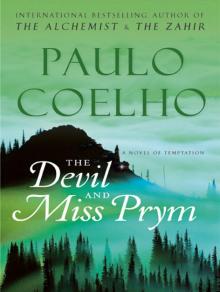 The Devil and Miss Prym: A Novel of Temptation
The Devil and Miss Prym: A Novel of Temptation The Valkyries: An Encounter With Angels
The Valkyries: An Encounter With Angels Brida: A Novel
Brida: A Novel Fifth Mountain: A Novel
Fifth Mountain: A Novel Adultery
Adultery Inspirations
Inspirations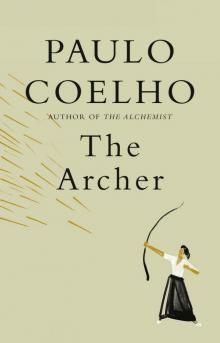 The Archer
The Archer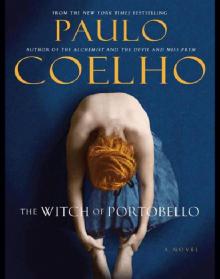 The Witch of Portobello
The Witch of Portobello The Pilgrimage
The Pilgrimage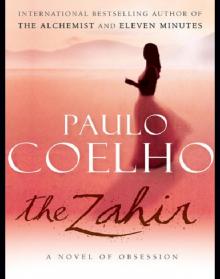 The Zahir
The Zahir Brida
Brida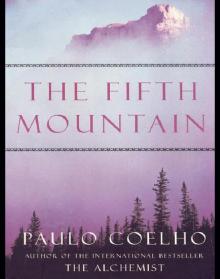 The Fifth Mountain
The Fifth Mountain Like the Flowing River: Thoughts and Reflections
Like the Flowing River: Thoughts and Reflections Manual of the Warrior of Light
Manual of the Warrior of Light By The River Piedra I Sat Down & Wept
By The River Piedra I Sat Down & Wept The Supreme Gift
The Supreme Gift Aleph
Aleph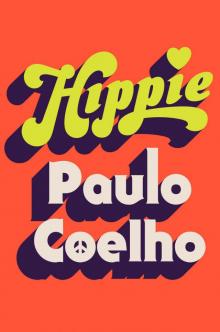 Hippie
Hippie Witch of Portobello
Witch of Portobello The Devil and Miss Prym
The Devil and Miss Prym The Alchemist - 10th Anniversary Edition
The Alchemist - 10th Anniversary Edition The Valkyries
The Valkyries